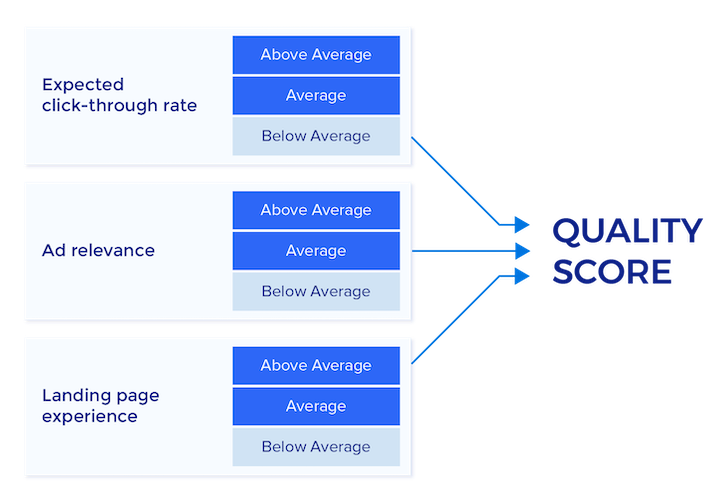The Science of Keywords: Nailing Google Ads Relevance

Are you struggling to find the right keywords to create a compelling ad copy? Finding relevant keywords for your ad campaigns is indeed challenging! Considering the impact of keywords on the overall campaign performance, you must choose the keywords pertinent to your product.
Mastering Google Ads Relevance helps to improve your ad's quality score and rank high on search engines. 80% of businesses globally incorporate Google Ads in their PPC campaigns. These ads reach over 90% of internet users globally.
Given the potential of Google Ads for your strategies, it is essential to leverage this platform. Read on to understand the role of keywords in this process, the relevance of keyword research on ad campaigns and some strategies to increase ad relevance.
Overview of Google Ads Keyword Research
Google Ads is a tool to create pay-per-click ads that help to increase brand visibility across Google platforms. These include Google shopping ads, search ads, Google banner ads, and YouTube ads, which are displayed across all Google platforms. However, the ads must be targeted to appear when a user searches.
Performing keyword research is one of the ways to target the right audience. It is a process wherein you identify the most relevant terms that prospects enter on search engines.
Keyword Match Types
The extent of reach an ad campaign can have depends on the type of keyword matching that you input. There are primarily three kinds of matches, as illustrated below. Based on the categorisation, your campaign will differ in reach and relevance.

Let's further understand the types here:
-
Exact Match: The search engine displays your ad for queries that have the same meaning or match the user intent. Comparatively, they appear in limited search results.
-
Phrase Match: The search engine matches queries containing a keyword phrase. With this match type, you can appear in more user searches than an exact match and fewer than broad match types.
-
Broad Match: When you choose a broad match type, the search engine matches related queries with your keyword. It broadens the scope of ads and helps them appear in user searches.
Role of Ad Relevance
Relevance is a measure of how closely your ad matches with the user's search. Google ad relevance depends on three aspects: landing page, keywords, and ads. How do they relate to each other?
Your keywords should align with your ads, and these ads should match with landing pages. Finally, all three of these should match the user's intent.
Importance of Relevance in Ad Campaigns
An ad campaign aims to match the user's search intent. Higher ad relevance equates to a high-quality score and higher rank on search results. Additionally, high relevance also implies a low cost per click.
For example, the following Google ad appears for the "CRM for sales" query as it includes the keyword in the ad description. Here, the ad relevance is high; as a result, it appears on the top of the SERP.
To achieve high ad relevance, let's understand how they work-
-
First, businesses create ads with specific keywords related to their products or services based on the user's search intent.
-
Next, someone searches on the Google search engine with a query.
-
The search engine algorithm matches all the related keywords (ads) with the queries. Subsequently, if your ad matches the search, it enters the Google Ads auction.
-
Google assigns a quality score for each ad based on user keywords, expected CTR, and user experience.
-
The ad rank is determined based on the quality score and bid. Finally, the ads with a higher position appear in the search result pages.
Given below are the factors that influence your quality score-
-
The click-through-rate (CTR) of your ad
-
The relevance of your ad text
-
The keyword relevance
-
Your landing page's quality and relevance
-
Your past performance on search results
Amongst all the factors affecting your quality score, your ad's CTR is the most important. If your ads have a high CTR, Google rewards you with high rankings or a low cost-per-click.
How is ad relevance measured? "Average", "Below Average", and "Above Average" are the parameters used to measure ad relevance. Ads with "Average" and "Above Average" imply that your ad aligns with the user search intent. While a "Below Average" rating indicates, your ad is irrelevant to the user queries and needs improvement.

Strategies for Improving Relevance
The ads relevant to the users get 3 times more attention than an average ad. This underlines the importance of increasing your ad relevance to drive conversions.
Here are a few strategies to increase your ad relevance-
Research Your Keywords and Ensure They Relate to the Ad Theme
An ad theme is the core idea or message of an advertising copy. Understanding the ad theme helps to increase brand awareness and establish an emotional connection with the audience.
Choose keywords that relate to the ad theme and the landing page. Incorporate phrases that customers use to define the products. If your keywords match the user's search intent, it is likelier to appear on searches. This ensures a higher click–through rate and, subsequently, higher returns.
Best Practices for Choosing Keywords Based on Ad Theme-
-
Use keywords with 2-3 phrases as they work effectively.
-
Incorporate long-tail keywords to return specific results, increasing ad relevance.
-
Choose keywords specific to your product.
Group Related Keywords into Ad groups
If you want to optimise your ad campaigns, grouping your keywords is a good strategy. Group tightly related keywords into ad groups. These ad groups can be based on various themes of your products or services.
Why should you create ad groups? Creating organised ad groups increases your quality score and reduces the cost-per-click. For example, your product is an online food delivery service. Then, you can create two ad groups: "food delivery" and "food delivery subscription." This optimises your overall ad performance.
Incorporate Keywords in Your Ad Text
Including relevant keywords in your ad text increases your quality score. Subsequently, these ads rank well on the SERP.
Best Practices for Using Keywords in Ad Text
-
Include primary keywords in the ad's headlines and descriptions.
-
Use long-tail keywords in your headlines and descriptions for increased relevance.
-
Use the Google ad preview tool to understand how your ad appears in the search results.
Optimise Your Landing Pages
Your optimisation shouldn't be limited to the ads; think beyond that. The landing page is one of the first things the user sees after clicking your ad. It is a crucial element that captures user attention and drives sales.
Ensure that your landing page and your ad match for a smooth transition. Experiment with different styles, CTAs, and descriptions to create a high-performing landing page!
Best Practices to Increase Your Ad Relevance with Landing Pages
-
Use the exact keywords in your landing page and ads.
-
Ensure the landing page's title and content align with your ad.
-
Choose the same colours, fonts and styles for the landing page and ads to create a better user experience.
-
Add a compelling CTA to your landing page for better conversions.
Monitor and Optimize Keyword Performance
No ad campaign is complete without performance testing. Experiment with keywords, ad texts, power words, images and CTAs to see which works best. Monitor your ad performance using different metrics within the Google Ads account. Google tracks your ads with metrics like click-through rate, conversions, impressions, and CPC.
Best Practices to Monitor Keyword Performance
-
Review your ad performance on Google Ads weekly and tweak your campaigns accordingly.
-
Keep the relevant keywords and eliminate the ones that don't convert.
-
Perform keyword research every 3-6 months as keyword trends change.
-
Use Negative Keywords to avoid appearing as irrelevant ads.
The Bottom Line
Google Ads is a valuable tool that helps to create customised and high-performing campaigns across Google platforms. Ad and keyword relevance are essential determiners of your campaign's performance on search engines. The best way to increase your ad relevance is with detailed keyword research.
Choose keywords related to your products and services and group them into relevant ad groups. Incorporate primary keywords in the ad text for better ad rankings. If you plan to explore advertising on Google, learn Google Ads and become acquainted with Google Ads policy for better conversions.
If you create your first Google Ad campaign, specialised digital marketing agencies can help you better understand the Google digital advertising ecosystem. The team of marketers at Growth Jockey has expertise in crafting compelling ads that capture the user's attention and convert high. To create high-performing ads and drive growth, contact us today!
Frequently Asked Questions
1. What is a Quality Score?
Google rates your ad based on the design and keywords used. This rating is referred to as the quality score. It depends on various factors, including landing page quality, keyword relevance, and ad text relevance. The higher your quality score, the better the chances of your ad getting placed at the top.
2. What do you mean by negative keywords in Google Ads?
A negative keyword is a type of keyword that prevents an ad from showing up when triggered by a specific word or phrase. By setting negative keywords in Google ads, your ads won't appear when searches with those words or phrases are typed in.
3. How does AdWords Work?
Google AdWords follows a bidding system, meaning the higher the price of your ad, the higher it will rank. Businesses advertising on the platform pay for the quoted amount only when someone clicks on their ads.








